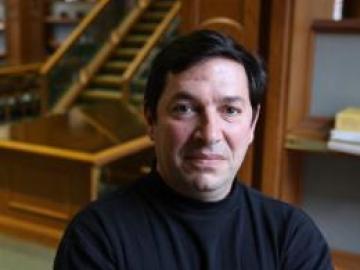Filter News
Area of Research
- (-) Neutron Science (77)
- (-) Supercomputing (107)
- Advanced Manufacturing (13)
- Biological Systems (14)
- Biology and Environment (40)
- Biology and Soft Matter (1)
- Building Technologies (3)
- Chemistry and Physics at Interfaces (4)
- Clean Energy (167)
- Climate and Environmental Systems (2)
- Computational Biology (4)
- Computational Engineering (2)
- Computer Science (4)
- Energy Frontier Research Centers (7)
- Energy Sciences (2)
- Fossil Energy (2)
- Fuel Cycle Science and Technology (1)
- Functional Materials for Energy (6)
- Fusion and Fission (17)
- Fusion Energy (2)
- Geographic Information Science and Technology (2)
- Isotope Development and Production (1)
- Isotopes (8)
- Materials (204)
- Materials Characterization (2)
- Materials for Computing (13)
- Materials Synthesis from Atoms to Systems (5)
- Materials Under Extremes (5)
- National Security (24)
- Nuclear Science and Technology (24)
- Nuclear Systems Modeling, Simulation and Validation (1)
- Nuclear Systems Technology (1)
- Quantum Condensed Matter (1)
- Quantum information Science (1)
- Reactor Technology (1)
- Sensors and Controls (1)
- Transportation Systems (5)
News Type
News Topics
- 3-D Printing/Advanced Manufacturing (6)
- Artificial Intelligence (13)
- Big Data (2)
- Bioenergy (7)
- Biology (7)
- Biomedical (8)
- Biotechnology (1)
- Buildings (1)
- Chemical Sciences (3)
- Climate Change (3)
- Composites (1)
- Computer Science (32)
- Coronavirus (8)
- Cybersecurity (7)
- Decarbonization (2)
- Energy Storage (7)
- Environment (5)
- Exascale Computing (7)
- Frontier (13)
- Fusion (1)
- Grid (3)
- High-Performance Computing (12)
- Isotopes (1)
- Machine Learning (5)
- Materials (13)
- Materials Science (15)
- Microscopy (5)
- Molten Salt (1)
- Nanotechnology (10)
- National Security (5)
- Neutron Science (40)
- Nuclear Energy (2)
- Partnerships (1)
- Physics (11)
- Quantum Computing (5)
- Quantum Science (13)
- Security (4)
- Simulation (1)
- Space Exploration (1)
- Summit (14)
- Sustainable Energy (6)
- Transportation (3)
Media Contacts

After a highly lauded research campaign that successfully redesigned a hepatitis C drug into one of the leading drug treatments for COVID-19, scientists at ORNL are now turning their drug design approach toward cancer.

The Spallation Neutron Source at the Department of Energy's Oak Ridge National Laboratory set a world record when its particle accelerator beam operating power reached 1.7 megawatts, substantially improving on the facility’s original design capability.

Innovations in artificial intelligence are rapidly shaping our world, from virtual assistants and chatbots to self-driving cars and automated manufacturing.

Like most scientists, Chengping Chai is not content with the surface of things: He wants to probe beyond to learn what’s really going on. But in his case, he is literally building a map of the world beneath, using seismic and acoustic data that reveal when and where the earth moves.

ORNL’s Debangshu Mukherjee has been named an npj Computational Materials “Reviewer of the Year.”

Lawrence Livermore National Laboratory’s Lori Diachin will take over as director of the Department of Energy’s Exascale Computing Project on June 1, guiding the successful, multi-institutional high-performance computing effort through its final stages.

The Oak Ridge Leadership Computing Facility’s Matt Sieger has been named the project director for the OLCF-6 effort. This next OLCF undertaking will plan and build a world-class successor to the OLCF’s still-new exascale system, Frontier.

Juan M. Restrepo, a distinguished researcher and head of the Mathematics in Computation section at the Department of Energy’s Oak Ridge National Laboratory, has been named vice-chair of the Society for Industrial and Applied Mathematics' new Activity Group on Equity, Diversity and Inclusion. SIAM is one of the world’s premier societies for mathematics and computational sciences.

With the world’s first exascale supercomputing system now open to full user operations, research teams are harnessing Frontier’s power and speed to tackle some of the most challenging problems in modern science.

Computing pioneer Jack Dongarra has been elected to the National Academy of Sciences in recognition of his distinguished and continuing achievements in original research.




